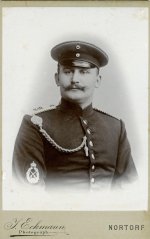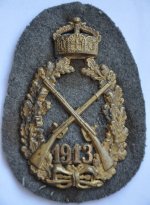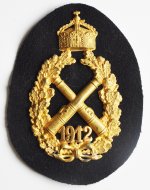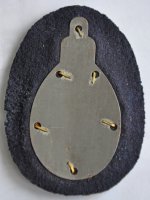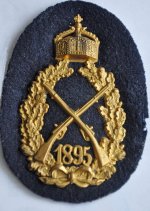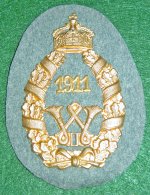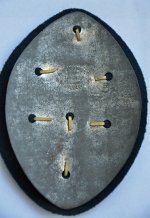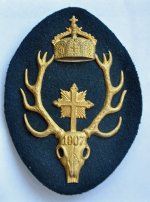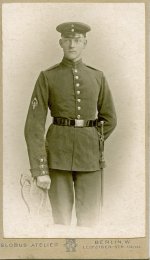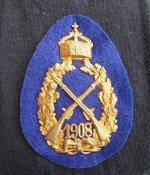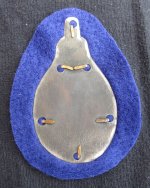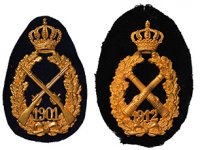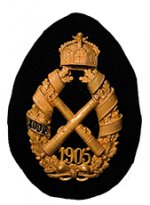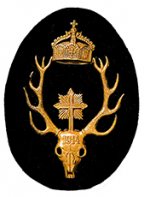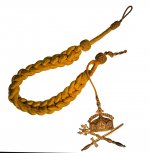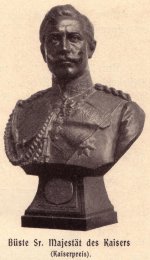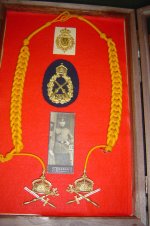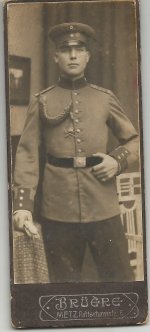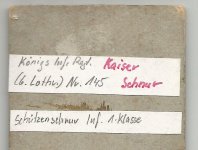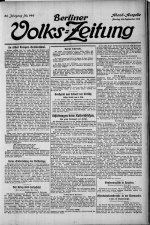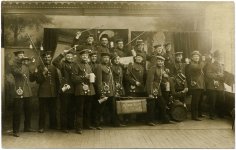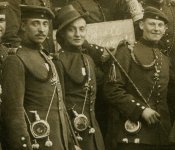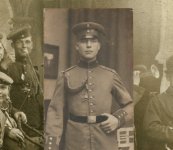Steve Nick
Well-known member
In 1895 the German Army began the practice of awarding a prize for marksmanship in the Infantry, Jägers and the Artillery. The award was extended to include Machine Gun units in 1903. The Kaiser’s Prize was awarded to all units under Prussian control, and utilizes the straight-sided Imperial crown. Therefore, prizes awarded to company’s hailing from Hesse, Mecklenburg or Baden utilized the Imperial crown.
The prizes were fashioned from brass with a gilt finish and were mounted on an oval cloth backing in the colour of the service branch. Infantry awards are found with a dark Prussian blue backing until the introduction of the pattern 1910 Field Grey uniform.
Selected infantry companies in each Army Corps competed annually for the prizes. The competition was conducted over a simulated combat type firing course set up in the country side using silhouette type targets.
Machine gun units only competed in the odd numbered years. Therefore, award years should be as follows: 1903,1905,1907,1909,1911,1913.
The prizes were worn on the right coat sleeve, while the captain of the victorious company was awarded The Order of the Red Eagle fourth class.
The prizes were also awarded to the Navy as well and are indistinguishable from the Kaiser’s prize for the artillery. The prize was issued to the companies of the ship which had the best marksmanship record during the annual Fleet Manoeuvers each spring. Recipients of the naval prizes were allowed to wear them as long as they remained as a member of the crew of the ship on which they won the award. The Kaiser’s prize format was awarded as the Navy was considered to be an Imperial institution.
There are differences noted in the dies for Kaiser Prizes suggesting there were different makers
Due to the fact that the shooting competitions for the Army were held in the late summer, 1913 was the last year in which they were awarded.
The prizes were fashioned from brass with a gilt finish and were mounted on an oval cloth backing in the colour of the service branch. Infantry awards are found with a dark Prussian blue backing until the introduction of the pattern 1910 Field Grey uniform.
Selected infantry companies in each Army Corps competed annually for the prizes. The competition was conducted over a simulated combat type firing course set up in the country side using silhouette type targets.
Machine gun units only competed in the odd numbered years. Therefore, award years should be as follows: 1903,1905,1907,1909,1911,1913.
The prizes were worn on the right coat sleeve, while the captain of the victorious company was awarded The Order of the Red Eagle fourth class.
The prizes were also awarded to the Navy as well and are indistinguishable from the Kaiser’s prize for the artillery. The prize was issued to the companies of the ship which had the best marksmanship record during the annual Fleet Manoeuvers each spring. Recipients of the naval prizes were allowed to wear them as long as they remained as a member of the crew of the ship on which they won the award. The Kaiser’s prize format was awarded as the Navy was considered to be an Imperial institution.
There are differences noted in the dies for Kaiser Prizes suggesting there were different makers
Due to the fact that the shooting competitions for the Army were held in the late summer, 1913 was the last year in which they were awarded.

